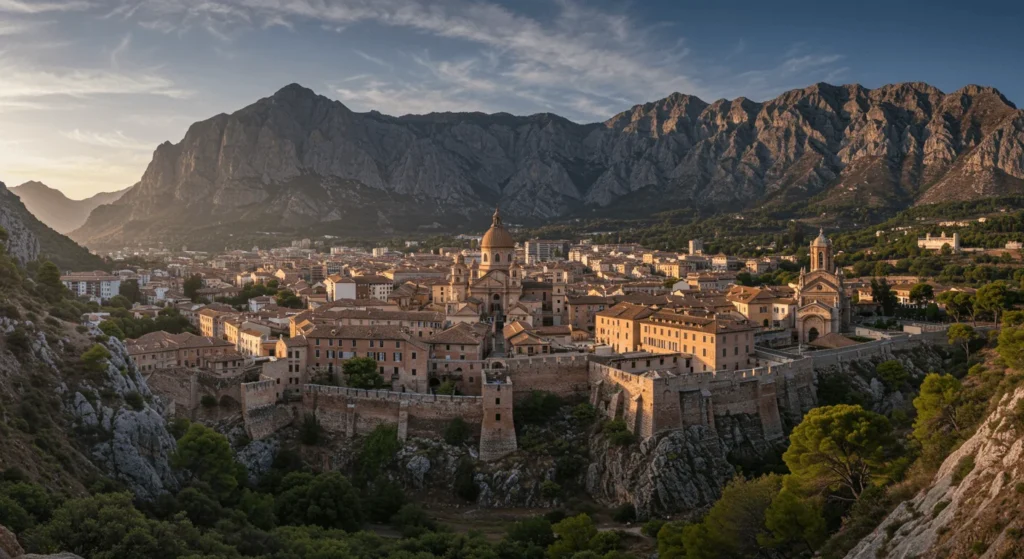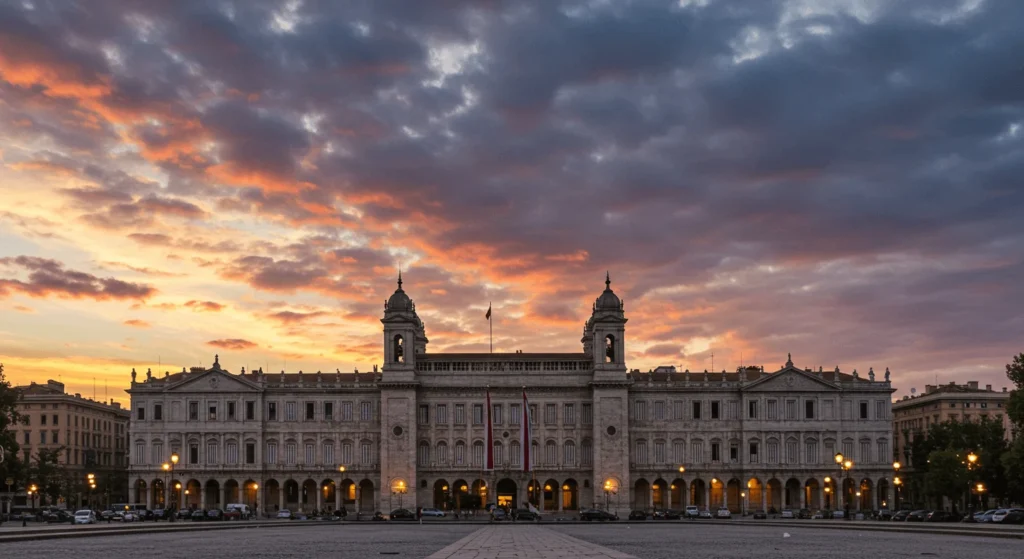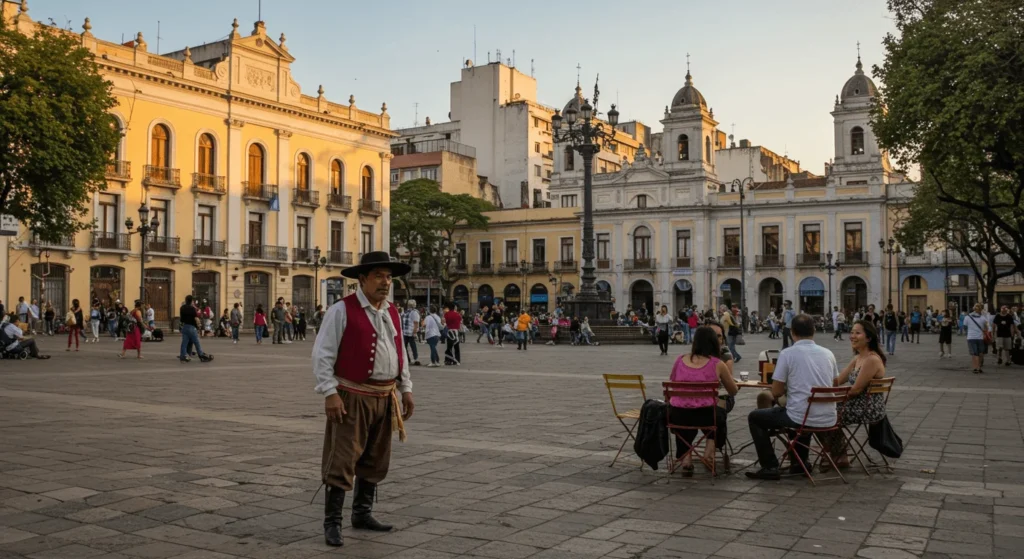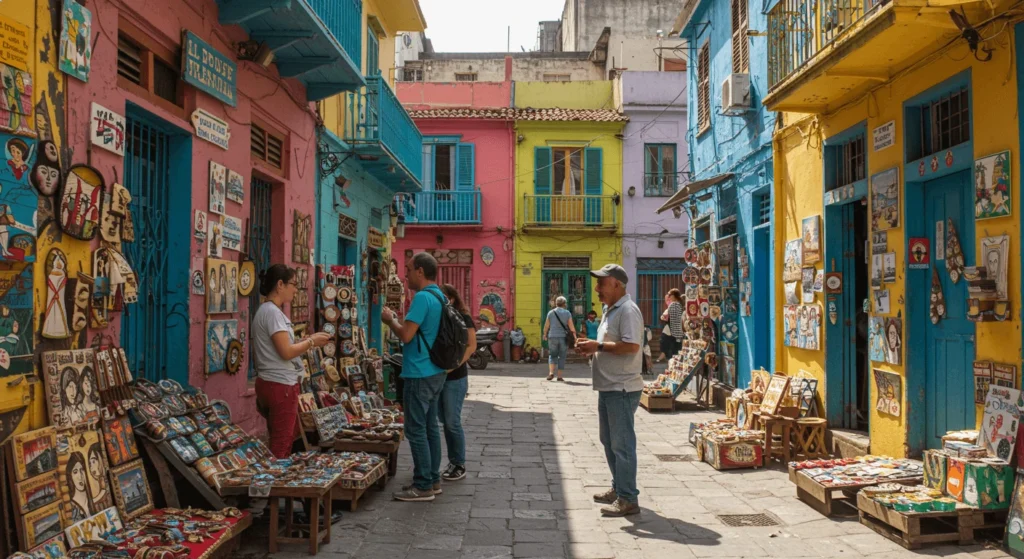Introduction
Planning your dream trip to Argentina? Wondering about the best time to visit Argentina? You’re not alone! Argentina offers something magical year-round, from the vibrant streets of Buenos Aires to the breathtaking landscapes of Patagonia. However, knowing when to go can make all the difference in your experience. Whether you want to hike the Andes, marvel at Iguazu Falls, or enjoy Mendoza’s wine harvest, timing is everything.
In this guide, we’ll explore Argentina’s seasons, top destinations, and the perfect times to visit each. You’ll learn how the weather, festivals, and activities can enhance your trip. Plus, discover tips to plan your visit, maximize your budget, and enjoy Argentina to the fullest. Keep reading to find your perfect timing for an unforgettable Argentine adventure!
Here’s the updated version of the section with an increased percentage of transition words. I’ve ensured smoother transitions, clarity, and alignment with the focus keyword.
Understanding the Best Time to Visit Argentina by Season

Argentina’s diverse geography offers something special throughout the year. However, understanding its seasons will help you plan an unforgettable trip.
Overview of Argentina’s Four Seasons
Spring (September–November): Mild weather and blooming landscapes
Spring is undoubtedly one of the best times to visit Argentina, especially for exploring its vibrant cities and natural wonders. For example, Buenos Aires offers mild temperatures, averaging 15–22°C (59–72°F), perfect for strolling through Bosques de Palermo. Moreover, Mendoza’s wine regions come alive with colorful vineyards. Additionally, wildlife enthusiasts can spot baby animals in Patagonia as spring rejuvenates the landscape.
Summer (December–February): Warm temperatures and peak travel season
Summer is ideal for adventures in Patagonia, where temperatures range between 10–20°C (50–68°F). For instance, you can hike the Fitz Roy trails or visit the Perito Moreno Glacier. However, Buenos Aires can get quite hot, reaching 30°C (86°F). Yet, the city’s vibrant nightlife and outdoor cafes make it enjoyable. Furthermore, summer is the peak season, so booking accommodations early is essential.
Fall (March–May): Beautiful autumn foliage and quieter tourist spots
Fall offers cooler temperatures, typically ranging from 12–20°C (54–68°F), which makes it a comfortable season for travel. For example, Patagonia’s forests showcase stunning autumn colors, creating breathtaking scenery. Additionally, Salta’s Quebrada de Humahuaca offers scenic drives through dramatic landscapes. Moreover, Mendoza’s vineyards host wine-tasting events surrounded by vibrant foliage. Since it’s less crowded, fall is also perfect for budget-conscious travelers.
Winter (June–August): Ideal for skiing and fewer crowds
Winter is perfect for skiing in Bariloche or Las Leñas, where snow-covered landscapes attract adventure enthusiasts. Meanwhile, Buenos Aires remains relatively mild, with temperatures between 8–15°C (46–59°F), making it ideal for cultural activities such as museum visits. Additionally, wildlife enthusiasts can head to Peninsula Valdés, as winter is the best time to watch whales. Moreover, with fewer tourists, winter offers a more relaxed travel experience.
How Climate Impacts the Best Time to Visit Argentina
Argentina’s vast size creates diverse climates, which greatly influence the best time to visit Argentinabased on your interests.
Northern Regions: Tropical and Subtropical Weather
The north remains warm year-round, but summers can be hot and humid. For example, Iguazu Falls are most powerful during the rainy season (December–March), although trails might be slippery. Conversely, fall and spring offer more pleasant weather and manageable crowds.
Southern Patagonia: Cool Summers and Harsh Winters
Patagonia is best visited in summer, as milder temperatures make outdoor activities accessible. However, winters bring freezing conditions and strong winds, making it less ideal for most travelers. Additionally, late spring or early fall provides moderate weather and smaller crowds, offering a great alternative for budget travelers.
Tips for Adapting to Argentina’s Diverse Weather
Packing for Different Regions in One Trip
Since Argentina’s weather varies greatly, packing layers is essential. For instance, lightweight clothing is perfect for Iguazu Falls, while Patagonia demands warm jackets. Additionally, waterproof gear is crucial during the rainy season.
Managing Unexpected Rain or Extreme Temperatures
Always check local forecasts and plan accordingly. For example, if rain interrupts your outdoor plans in Buenos Aires, explore museums or indoor cafes instead. Moreover, carrying an umbrella and wearing sturdy footwear ensures you’re prepared for sudden weather changes.
The Best Time to Visit Argentina’s Most Popular Destinations

Argentina’s diverse attractions shine during different seasons, making it essential to time your visit carefully. Whether you’re drawn to vibrant cities, majestic landscapes, or natural wonders, this guide helps you choose the best time to visit Argentina’s top destinations.
Best Time to Visit Buenos Aires
Spring and Fall for Pleasant Weather and Cultural Festivals
Buenos Aires enjoys mild temperatures during spring (September–November) and fall (March–May), ranging between 15–22°C (59–72°F). This makes it ideal for outdoor explorations, such as strolling through Palermo’s parks or browsing San Telmo’s markets. Additionally, cultural festivals like the International Tango Festival in August extend into fall, offering visitors unforgettable experiences.
Summer for Vibrant Nightlife and Open-Air Events
While summer (December–February) can be hot, reaching up to 30°C (86°F), it’s perfect for enjoying Buenos Aires’ lively nightlife and open-air events. For instance, many plazas host evening concerts, and rooftop bars provide incredible views of the city skyline. Moreover, restaurants open patios for al fresco dining, allowing visitors to embrace the city’s energetic vibe.
Best Time to Experience Patagonia’s Natural Wonders
Summer (December–February) for Hiking, Glacier Tours, and Wildlife
Summer is the best time to visit Argentina’s Patagonia region, with temperatures ranging from 10–20°C (50–68°F). During this period, hiking trails like Fitz Roy in El Chaltén and Torres del Paine are accessible. Moreover, glacier tours, such as the Perito Moreno Glacier, offer thrilling ice-trekking experiences. Wildlife enthusiasts can spot Magellanic penguins along the coast and Andean condors soaring above the Andes.
Fall for Stunning Autumn Colors in the Andes
Fall (March–May) transforms Patagonia’s landscapes with vibrant hues of red, orange, and gold. This season offers cooler temperatures and fewer crowds, making it ideal for photographers and solitude seekers. Additionally, the weather remains pleasant for hiking, while mountain lodges often offer discounted rates as the tourist season slows down.
Iguazu Falls: Choosing the Best Time to Visit Argentina’s Iconic Waterfall
Rainy Season for Powerful Waterfalls (December–March)
The rainy season enhances the grandeur of Iguazu Falls, with the cascades roaring at full strength. Visitors during this period witness breathtaking views, although trails may become muddy or temporarily closed. For example, the Garganta del Diablo (Devil’s Throat) is particularly awe-inspiring during high water levels. Be sure to pack waterproof gear if visiting between December and March.
Dry Season for Accessible Trails and Panoramic Views
The dry season (April–September) offers clearer skies and accessible trails, making it easier to explore Iguazu Falls on foot. For instance, visitors can enjoy uninterrupted walks along the Lower and Upper Circuits while spotting toucans and coatis. Moreover, the cooler temperatures make hiking more comfortable, and fewer crowds enhance the serene beauty of this UNESCO World Heritage Site.
Seasonal Highlights: Activities During the Best Time to Visit Argentina

Argentina’s rich culture, diverse landscapes, and incredible wildlife offer exciting activities year-round. From vibrant festivals to unforgettable adventures, each season brings something unique. Here’s how to plan your trip around Argentina’s seasonal highlights.
Festivals and Events to Plan Your Visit Around
Grape Harvest Festival (March) in Mendoza
March marks the peak of the grape harvest in Mendoza, Argentina’s premier wine region. The Grape Harvest Festival, or Fiesta Nacional de la Vendimia, celebrates this annual event with colorful parades, traditional music, and wine tastings. Visitors can also enjoy vineyard tours and hands-on grape-crushing experiences. For example, Bodega Catena Zapata offers tours that highlight the winemaking process during this festive time.
Tango Festival (August) in Buenos Aires
Every August, Buenos Aires hosts the International Tango Festival, attracting dancers and enthusiasts worldwide. The event features free performances, competitions, and workshops suitable for all skill levels. Moreover, visitors can experience the city’s passion for tango at iconic venues like Café Tortoni or La Viruta. Attending this festival is a must for those seeking an authentic cultural experience.
Outdoor Adventures for Each Season
Hiking and Camping in Patagonia During Summer
Summer (December–February) is the best time to visit Argentina for outdoor enthusiasts heading to Patagonia. The region’s mild temperatures and clear skies make hiking and camping ideal. Popular trails include the Fitz Roy trek in El Chaltén and the Torres del Paine W trek. Additionally, many national parks offer well-maintained campsites with breathtaking views of glaciers and mountains.
Skiing and Snowboarding in the Andes During Winter
Winter (June–August) transforms the Andes into a snowy paradise, perfect for skiing and snowboarding. Bariloche, often called Argentina’s “Little Switzerland,” is home to Cerro Catedral, the country’s largest ski resort. Other ski destinations, such as Las Leñas and Chapelco, offer slopes for all skill levels. Additionally, resorts often host après-ski events, ensuring a vibrant atmosphere for visitors.
Wildlife Watching: A Guide to Argentina’s Best Seasons
Whale Watching (June–December) at Peninsula Valdés
From June to December, Peninsula Valdés becomes a haven for wildlife lovers. Southern right whales migrate to these waters to mate and give birth, offering visitors unforgettable whale-watching experiences. For instance, Puerto Pirámides offers boat tours, providing close encounters with these majestic creatures. Visitors might also spot sea lions and elephant seals along the shores.
Penguin Colonies and Andean Condors in Patagonia
Patagonia’s wildlife is equally fascinating. From September to March, Magellanic penguins nest along the coasts of Punta Tombo and Tierra del Fuego. Visitors can walk among thousands of penguins in their natural habitat. Additionally, Andean condors, with their massive wingspans, can often be seen soaring above the Andes throughout the year, especially in remote regions like the Quebrada del Condorito National Park.
Pros and Cons of the Best Time to Visit Argentina by Season

Choosing the best time to visit Argentina depends on your preferences for weather, activities, and crowds. Each season has its unique advantages and drawbacks, so understanding these can help you plan the perfect trip.
Visiting Argentina in Spring (September–November)
Pros: Pleasant Weather, Blooming Flowers, and Fewer Crowds
Spring offers some of Argentina’s most pleasant weather, with temperatures ranging from 15–22°C (59–72°F). This makes it ideal for outdoor activities such as exploring Buenos Aires’ parks, like the Bosques de Palermo, which burst into vibrant bloom during this season. Additionally, tourist hotspots like Iguazu Falls and Mendoza are less crowded, allowing for a more relaxed experience. Moreover, spring is great for wildlife spotting, as baby animals emerge in Patagonia during this period.
Cons: Higher Accommodation Costs in Some Areas
Although spring offers fewer crowds, some regions, especially wine destinations like Mendoza, experience an uptick in tourism. Consequently, accommodations in popular areas may be more expensive. Additionally, festivals like the Buenos Aires Book Fair may drive up prices in the capital. To save money, booking early is highly recommended.
Summer (December–February): The Best Time for Outdoor Adventures in Argentina
Pros: Perfect for Exploring Patagonia and Iguazu Falls
Summer is the best time to visit Argentina for those seeking outdoor adventures. Patagonia’s weather is at its peak, with temperatures ranging from 10–20°C (50–68°F). This season is perfect for hiking iconic trails like Fitz Roy or exploring glaciers like Perito Moreno. Similarly, Iguazu Falls is at its most powerful during the rainy season, offering breathtaking views of the cascades. Summer also brings vibrant festivals, such as Carnival in the northern regions, which showcase Argentina’s rich culture.
Cons: Peak Season Prices and Crowded Tourist Spots
Summer is peak travel season, leading to crowded attractions, particularly in Patagonia and Iguazu Falls. For example, popular national parks like Los Glaciares may have limited availability for guided tours and accommodations. Furthermore, airfare and lodging costs are significantly higher, especially in tourist hubs. Planning ahead and considering off-the-beaten-path destinations can help mitigate these issues.
Fall and Winter: Underrated Times to Visit Argentina
Pros: Quieter Regions, Wine-Tasting Tours, and Skiing Opportunities
Fall (March–May) and winter (June–August) are ideal for travelers seeking tranquility. During fall, the wine regions of Mendoza and Salta showcase vibrant vineyard colors and host intimate wine-tasting experiences. Additionally, Patagonia’s autumn foliage offers a stunning backdrop for photographers. Winter, on the other hand, is perfect for skiing in the Andes at destinations like Bariloche or Las Leñas. These quieter seasons also offer more affordable accommodations and fewer crowds.
Cons: Limited Activities in Colder Southern Regions
Patagonia’s harsh winters can limit outdoor activities such as hiking and glacier tours. For example, some trails in El Chaltén may close due to icy conditions. Furthermore, wildlife spotting opportunities decrease, as certain species migrate or become less active. However, visitors can still enjoy indoor attractions or shift their focus to warmer northern regions, like Iguazu Falls or Salta.
Practical Tips for Choosing the Best Time to Visit Argentina

Planning a trip to Argentina requires careful consideration of your interests, budget, and packing needs. These practical tips will help you align your plans with the best time to visit Argentina, ensuring a seamless and memorable experience.
Aligning Your Travel Goals with the Best Season
Adventure Enthusiasts: Summer and Spring for Outdoor Activities
Adventure seekers should visit during Argentina’s summer (December–February) or spring (September–November). For example, summer is perfect for hiking Patagonia’s iconic trails, such as Fitz Roy in El Chaltén, under clear skies. Moreover, spring offers milder weather for exploring the Andes and enjoying outdoor activities like horseback riding in Salta’s countryside. Additionally, spring is an excellent time for whale-watching tours at Peninsula Valdés.
Cultural Travelers: Fall and Winter for Festivals and Museums
Cultural enthusiasts will appreciate Argentina’s vibrant festivals and museums during fall (March–May) and winter (June–August). Fall is ideal for visiting Mendoza’s wine festivals, which offer tastings, vineyard tours, and local cuisine. Meanwhile, winter allows travelers to explore Buenos Aires’ renowned museums, such as the MALBA, without dealing with high temperatures or large crowds. Furthermore, tango lovers can enjoy cozy performances at indoor venues during these cooler months.
Budget-Friendly Advice for the Best Time to Visit Argentina
Booking Off-Season Travel for Cheaper Rates
Traveling off-season can significantly reduce costs while avoiding peak-season crowds. For instance, visiting Patagonia during fall or early spring often results in lower accommodation prices. Additionally, airfare to Buenos Aires is usually cheaper between March and May. Though some attractions may have reduced access, many travelers find the savings worth it.
Maximizing Your Experience During Shoulder Seasons
Shoulder seasons, such as late spring (November) or early fall (March), strike the perfect balance between cost, weather, and crowds. For example, Iguazu Falls offers spectacular views with fewer tourists during these times. Moreover, Patagonia’s hiking trails remain open, and the weather is still favorable for outdoor adventures. Planning your trip during these transition periods ensures a more relaxed and budget-friendly experience.
Packing Essentials for the Best Time to Visit Argentina
Layered Clothing for Patagonia’s Variable Climate
Patagonia’s unpredictable weather demands layers. Start with moisture-wicking base layers, followed by fleece or insulated jackets, and finish with waterproof outerwear. For example, a compact rain jacket is essential for sudden downpours during hikes. Additionally, sturdy boots and thermal socks are necessary for glacier trekking or long trails.
Essentials for Summer Heat and Winter Cold
If visiting in summer, pack lightweight, breathable clothing, especially for Buenos Aires and Iguazu Falls, where temperatures can exceed 30°C (86°F). Don’t forget sunscreen, a hat, and insect repellent for outdoor excursions. Conversely, winter travelers should prioritize warm coats, scarves, and gloves, particularly if skiing in Bariloche or exploring snowy landscapes. Bringing a reusable water bottle is always a good idea, regardless of the season.
Conclusion: Perfect Timing for Your Trip to Argentina
Argentina’s beauty is unmatched, and its diverse seasons offer unique experiences for every traveler. By understanding what each season brings, you can plan the trip of a lifetime. Here’s a quick recap of what to expect and how to make the most of your visit.
Recap the Highlights of Argentina’s Seasons
Spring (September–November) offers blooming flowers, mild weather, and fewer crowds. This makes it perfect for exploring Buenos Aires or wine-tasting in Mendoza. For instance, visiting the parks of Buenos Aires during spring lets you enjoy nature’s vibrant colors while avoiding the summer heat.
Summer (December–February) is ideal for outdoor adventures, with Patagonia’s trails and Iguazu Falls at their best. Adventure enthusiasts will appreciate Patagonia’s accessible hikes and glacier tours, while Iguazu’s waterfalls are powerful and awe-inspiring. However, summer crowds mean you should book early.
Fall (March–May) is the perfect time for quieter travel and stunning autumn landscapes. For example, Patagonia glows with golden foliage, and Salta’s roads are scenic and peaceful. In Mendoza, wine festivals add cultural charm to the season.
Winter (June–August) is a haven for skiing enthusiasts, with Bariloche and Las Leñas offering pristine slopes. Additionally, Peninsula Valdés becomes a hub for wildlife lovers, with opportunities to spot whales and sea lions.
Match Argentina’s Seasons to Your Travel Goals
Choosing the best time to visit Argentina depends on your personal interests and travel preferences. Are you an adventure seeker? Plan your trip for summer or spring to enjoy Patagonia’s outdoor activities. Are you passionate about culture and wine? Fall and winter provide quieter regions and exciting festivals.
No matter the season, Argentina’s vast landscapes and vibrant culture ensure unforgettable memories. Tailor your trip around what excites you most—be it hiking, wine tasting, or cultural exploration. By aligning your travel goals with the ideal season, you’ll maximize your experience and make every moment count.
Discover More: Why Brazil Should Be Your Next Stop
If you’re inspired to explore more of South America, don’t stop with Argentina! Brazil, with its captivating culture, stunning beaches, and vibrant festivals, is another bucket-list destination. Check out our detailed post about Brazil to discover its best attractions and the perfect times to visit. Whether it’s Rio’s Carnival or the Amazon’s lush rainforests, Brazil offers incredible adventures year-round.